GIGABYTE Server GA-7PESH3 Motherboard Review
by Ian Cutress on September 4, 2014 2:00 PM EST- Posted in
- Motherboards
- Intel
- Gigabyte
- Xeon
- Workstation
- Enterprise
- C602
GIGABYTE GA-7PESH3 BIOS
An important point to realize with the major motherboard manufacturers is that the motherboard server team is a wholly different business unit to the end-user motherboard team. As a result, the only overlap between these two departments (apart from purchasing hardware) is at high level management. This usually means that the design teams do not talk to each other, the development teams do not talk to each other, and the BIOS/software teams are separate. This is a bit of a shame to be honest, because while the end-user side of the company is focused on delivering a good user experience, it does not translate over to the server side of the company which is more focused on robustness and support. This means that our BIOS interface, while technically an EFI/UEFI construct, is a simple text and select affair.
The front screen contains information on the BIOS version, the CPUs installed and the memory installed, but fails to mention which motherboard is in use. With standard graphical interfaces, even if they came to server implementations, would benefit from fan speeds and CPU temperatures on this screen as well.
The Advanced menu contains most of the motherboard options, especially the CPU configuration and the fan controls.
The fan controls are dire – for six fan headers, there is only one option and the rate of increase of fan speed is determined by a single value. For a workstation oriented motherboard, I would have assumed that an adaptive system would need to be in place.
The option for Above 4G Decoding, required for certain PCIe co-processors, is found in the PCI Subsystem menu and is disabled by default.
Users who are interested in every morsel of performance should head over to the CPU Power Management menu where the Energy Performance option should be changed to full performance. This makes the turbo modes more aggressive, maintaining a higher turbo on the CPUs for longer. We ran our system at the stock default option - balanced performance.
The GA-7PESH3 does support Hot Plug on the SATA ports, but this is disabled by default. This makes more sense if this motherboard is placed in a case with hot-plug bays rather than RAID applications.
Memory control is limited, with the Chipset -> North Bridge menu offering most of the options. The user can select the DDR3 Speed here, although sub-timing control is not offered. There is a DIMM information screen so diagnosis of an errant memory module can take place:
VT-d is also present, and in our configuration was enabled by default. There was no direction mention of VT-x in the BIOS.
The rest of the BIOS supports data logging for the management interface as well as boot order, fast boot options for Windows 8 and boot override functionality.
GIGABYTE GA-7PESH3 Software
For the reasons mentioned at the start of the BIOS analysis, the software system is similarly different to the channel motherboard market. There is no software directly usable or downloadable from the product page, and thus the management interface becomes the sole ‘software’ available for use.
The system uses a MergePoint EMS interface, similar what we saw on the GIGABYTE GA-7PESH1. After a login (default settings are admin/password) the above screen is shown, and if I were a server admin I would have like to see some indication of what hardware installed in the system on the front page, and if the machine is switched on and running, if one of a list of operating systems are detected.
As with these management systems, security is a major priority, and this system gives a level of IP blocking rather than an IP whitelist:
This is combined with a list of enabled users who have access:
The system can also adjust its web server management settings for the interface, giving timeouts and port selection.
The management system is based on a Linux kernel, as shown in the LDAP Configuration Page, which can also be updated akin to a firmware update:
One of the more important uses for the management software is remote control of the system. This comes in two parts – direct control over the state (on/off) of the system and the interface to the video output. The former is located in Power -> Control:
With the direct OS control provided by a virtual KVM over a Java based implementation:
Another aspect of the management center is keeping track of voltages, fan speeds and temperatures and indicating when they are out of the normal working window.
The GA-7PESH3 uses fourteen different temperature sensors for this, each of them with limits defined in firmware. I’m sure that a custom system would prefer these to be manually adjustable.
The management engine also keeps track of the system event log, for when the machine is booted or one of the aforementioned sensors goes out of optimal functioning parameters. When the temperature gets too high, or a fan fails, the system can react by forcing a reboot, power cycle or power the system down:


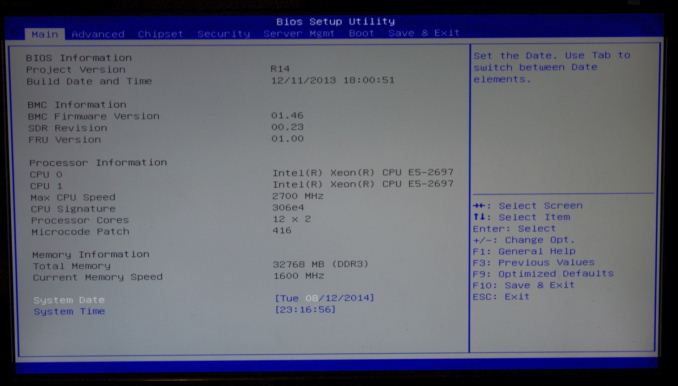
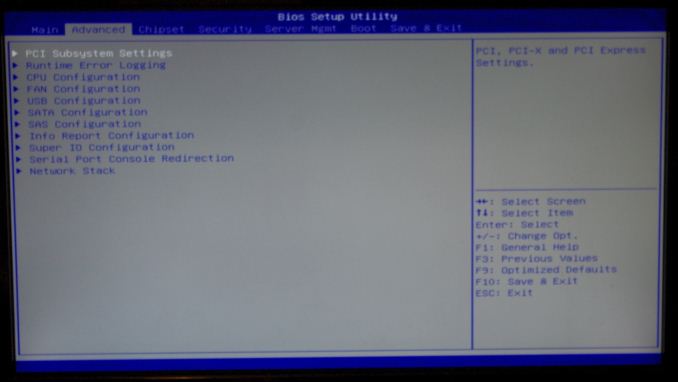
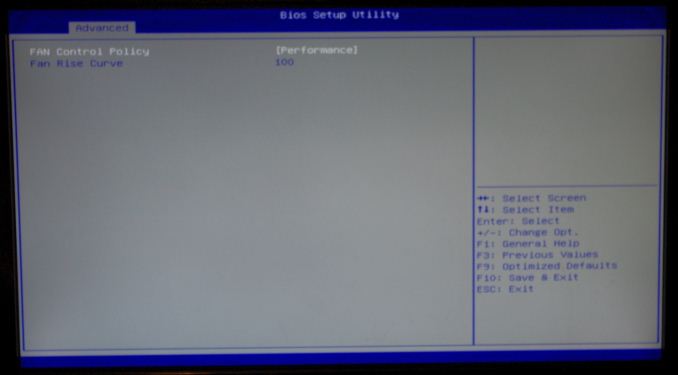
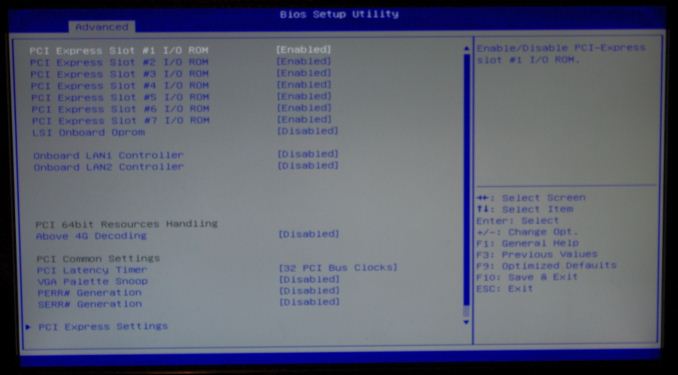
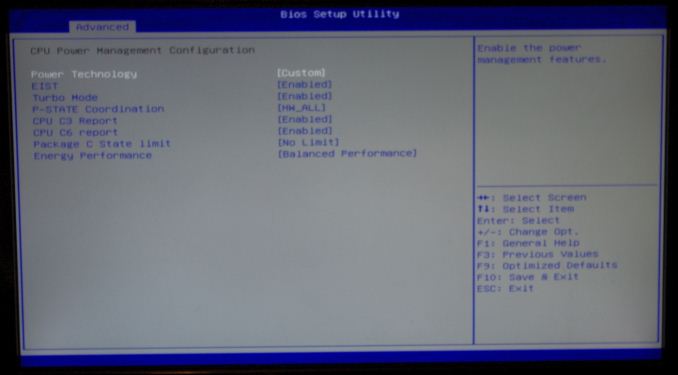
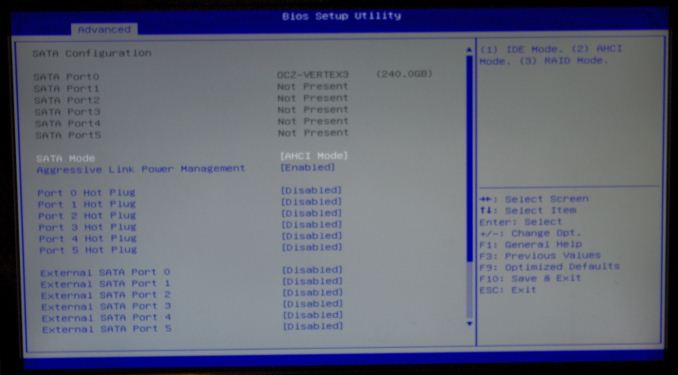
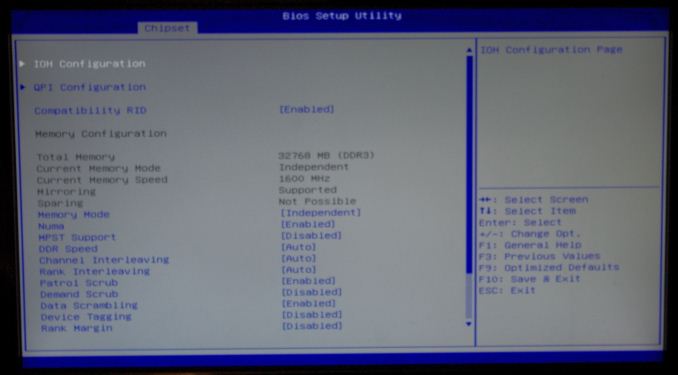
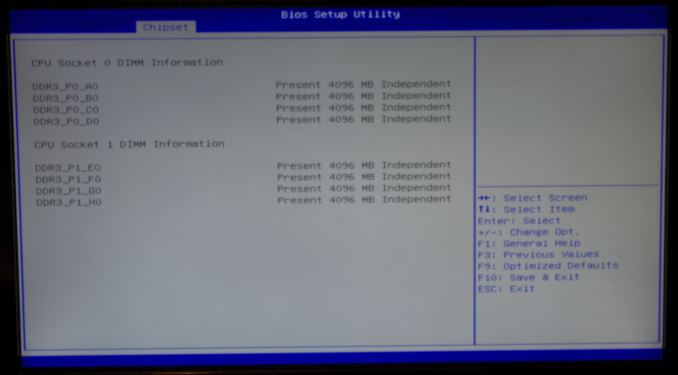
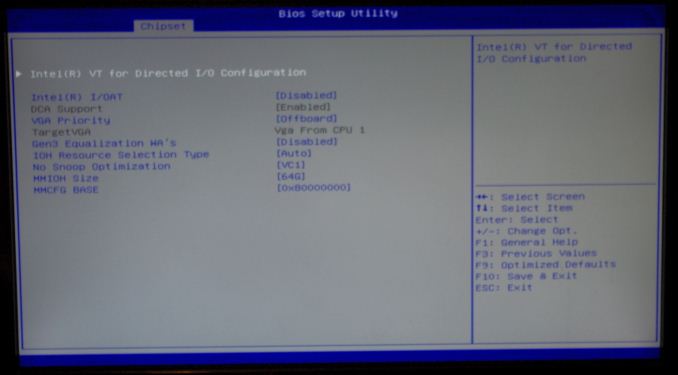






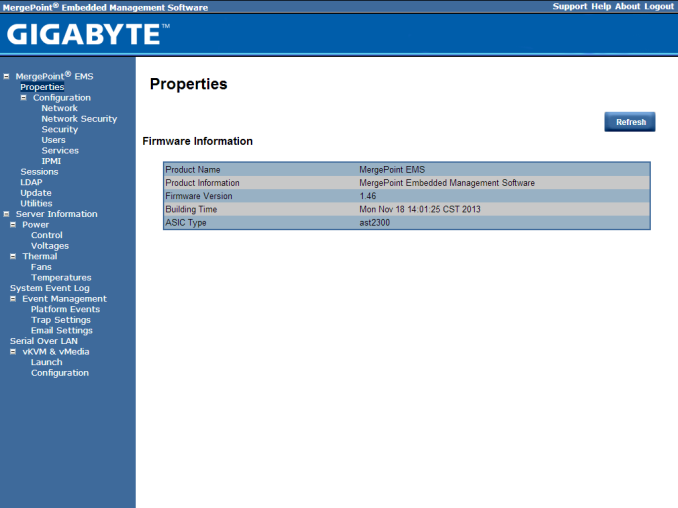
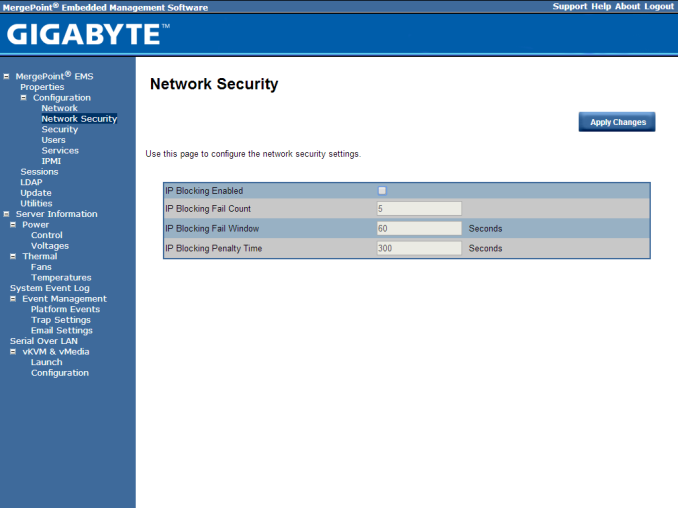
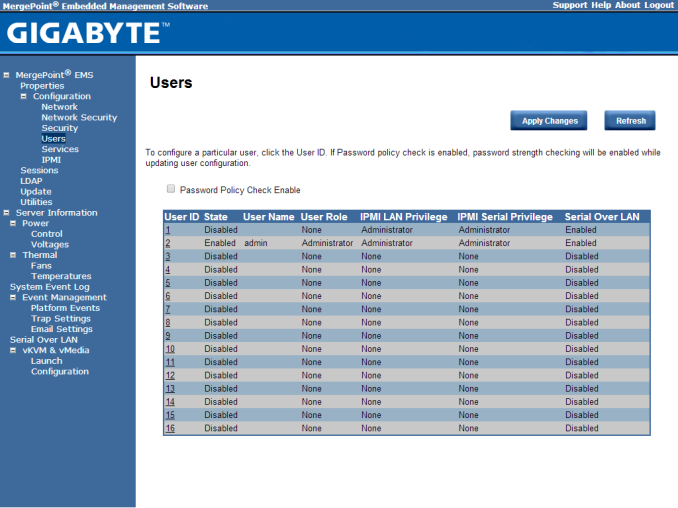
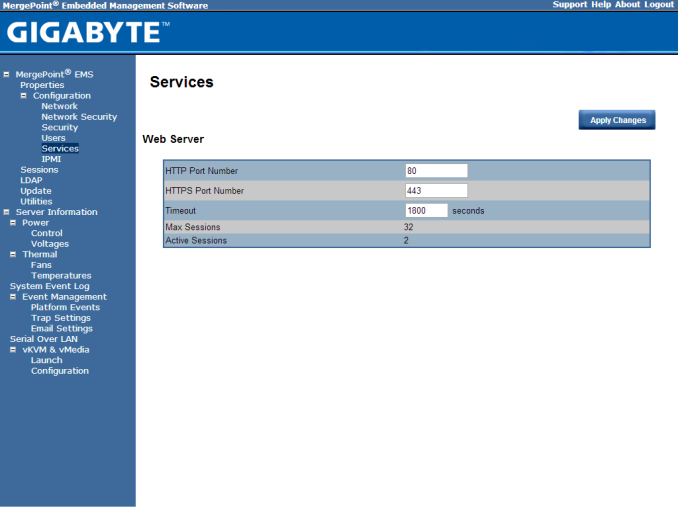
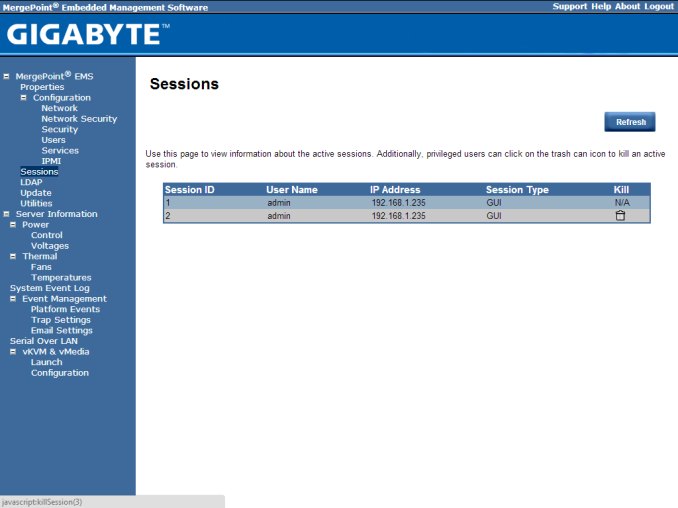
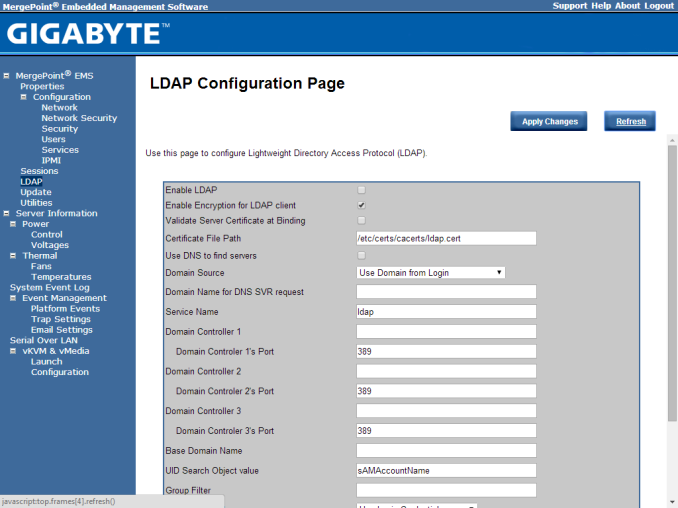
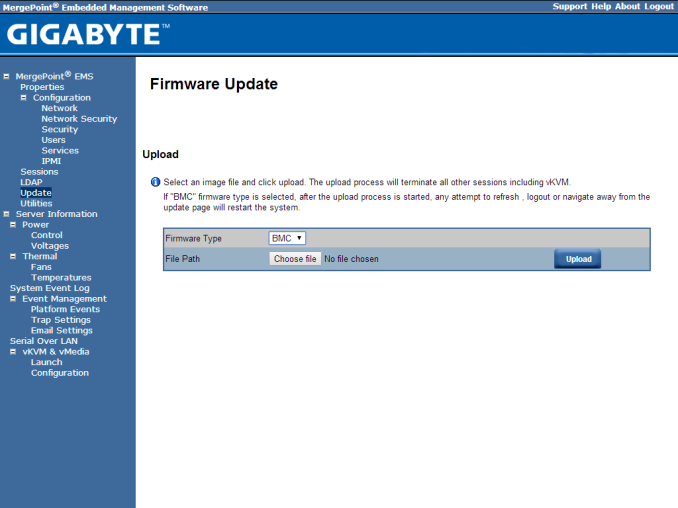
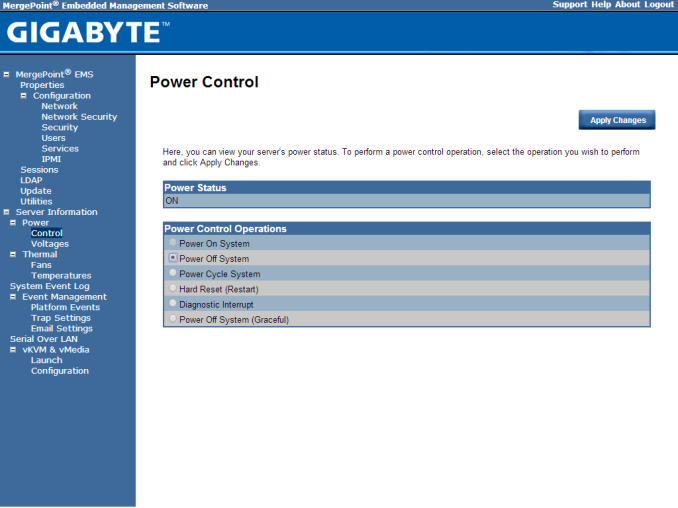
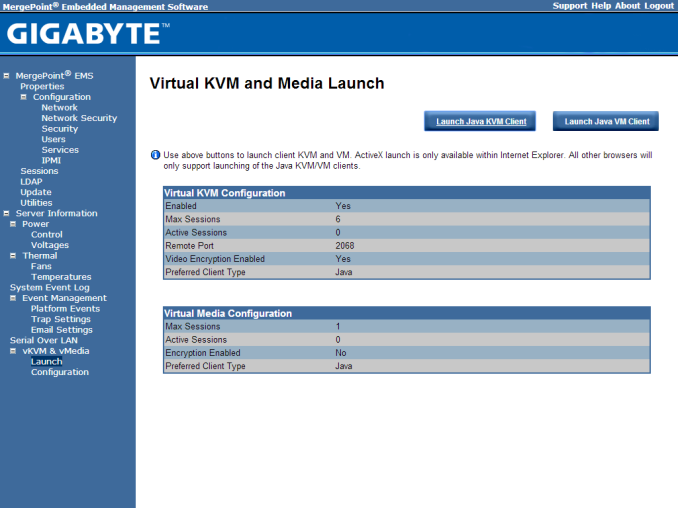
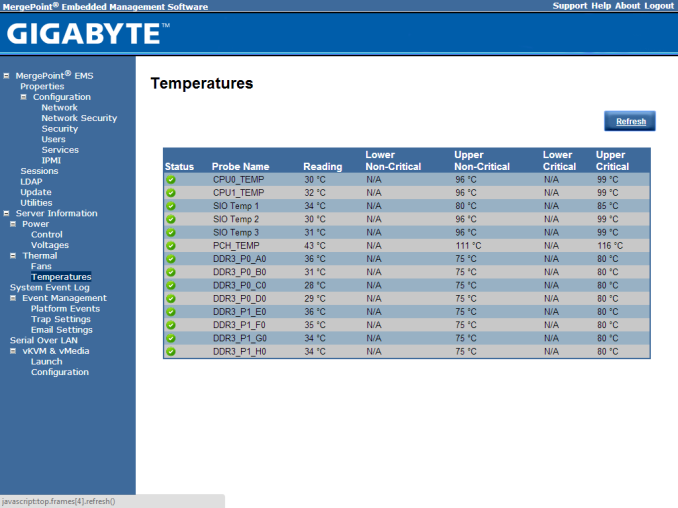
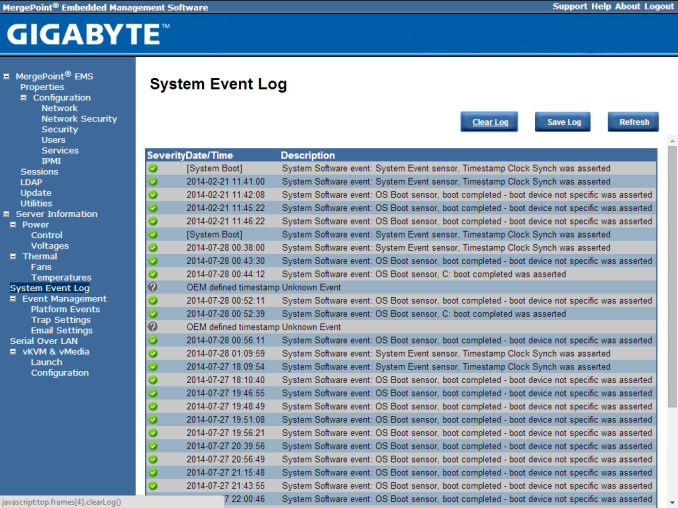
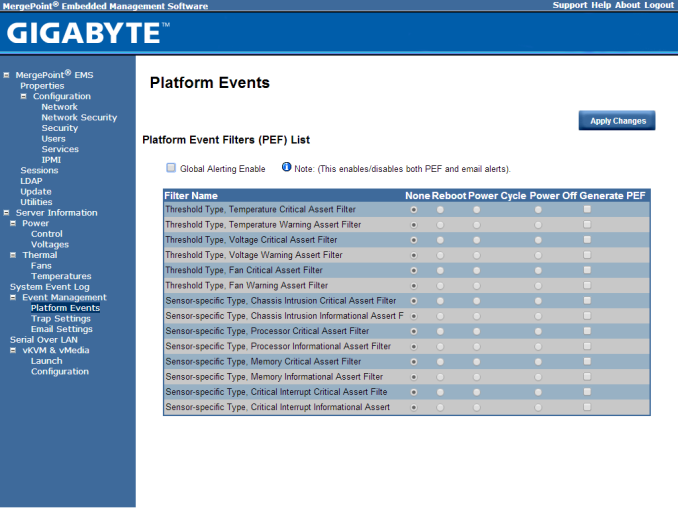














35 Comments
View All Comments
ShieTar - Friday, September 5, 2014 - link
Well, there is a tiny group of people who will be interested: They need a Workstation because they independently work with their PC to create content, but if possible they would also like to use the existing setup to game occasionally, instead of spend another 1k$ and put another Case next to their desk.Also, 10 years ago a lot of Trolls were posting "Yeah but can it run Quake" in the comment section of server hardware reviews. This kind of testing shuts them up.
xxsk8er101xx - Saturday, September 6, 2014 - link
Because the motherboard is designed for the prosumer market. Not the professional/server market. The point of the article is to basically say that this motherboard servers no purpose. It can't be used for the professional/server market because there are too few RAM slots and no mini-sas slots which the majority of the professional market has a need for.Kevin G - Sunday, September 7, 2014 - link
I think this motherboard has priced itself out of the prosumer market a bit at $650 USD and then you have Xeon prices on top of that. I do see this system being a decent pick for some professional tasks though. RAM capacity is still pretty decent as this board accepts 32 GB DIMMs for 256 GB capacity. That's a bit expensive due to 32 GB DIMM pricing but I see 128 GB via 16 GB DIMMs as reasonably priced for what you get. Needing more than 128 GB is a very small niche and one that overlaps widely with the idea of just using servers to batch process the large data sets anyway.The PCIe setup does scream professional though. Components like capture cards and PCIe SSDs are not going to be restricted in performance. (Though it is worrisome that this board doesn't have a dedicated aux power for just the PCIe slots.) The presence of onboard audio also indicates that this certainly isn't a server board.
I have yet to encounter a good reason for SAS in the professional space. 6 Gbit SATA provides enough bandwidth and SSD's can saturate that. SATA hard drives are adequate for bulk storage locally. (There is definitely a niche for SAS in server space with multi path IO for redundancy.) I can see a need for RAID5/6 in the prosumer and professional space but SAS isn't a requirement for it (though incidentally most RAID5/6 cards are SAS based). Even then, in most cases software RAID1 is 'good enough' for redundancy to prevent downtime in the professional space.
AnnihilatorX - Sunday, September 7, 2014 - link
Kindly read the article!: "While gaming is not a focus of motherboards like the GIGABYTE GA-7PESH3, the system may be in use by content developers relying on an accurate representation with what they are making. "gchernis - Thursday, September 4, 2014 - link
Nice write-up! Do you have any data on total CPU utilization with multithreaded tasks? What about kernel-time vs. user mode time split?JellyRoll - Thursday, September 4, 2014 - link
"Server motherboards historically have done rather poor in this test,"....perhaps because it is a server motherboard? are you testing a server workload on it?Samus - Thursday, September 4, 2014 - link
Anand used to do SQL benchmarks. This is what we need for this review to be complete.mavere - Thursday, September 4, 2014 - link
The Handbrake results are a bit disappointing because data-dependency breakpoints occur both naturally (at scene boundaries) and manually (at regular ~10s key-frame intervals). Conceptually, the transcoder can easily reuse the source's chapter-timing metadata and keyframes to outsource chunks of work to each socket with minimal communication overhead.I'm guessing that NUMA performance was never a pressing concern for any of Handbrake's and x264's contributors.
JDG1980 - Thursday, September 4, 2014 - link
I just can't see a good reason to buy into Ivy Bridge at this time, when Haswell-EP is just around the corner. Personally, I'm seriously considering the E5-1650 v3, assuming it comes in at a similar price point to its predecessor (and assuming that there are some decent workstation boards with ECC support available).And it's especially hard for AnandTech to justify the time reviewing this soon-to-be-obsolescent board when they still haven't gotten around to Tonga. I know it's not the most groundbreaking new GPU design (and AMD picked about the worst place in their lineup they possibly could to slot it), but still, it's a new GPU and we haven't seen a review despite every other major site doing so 2 days ago. What's going on with this?
ruthan - Thursday, September 4, 2014 - link
I would buy such machine for gaming if there would be performance benefit, so its good to know and mainstream everytime rules.. Its like SPARC or Power architecture, they cant compete because of mainstream x86 market is huge so, research revenue there are also huge, users requirements are bigger, more universal. This Sparc, Ithanium or Power market exist only because of stupid company policies, like everything from one company, support only for this HW, lies about super duper optimalisation for such HW, and especially license per CPU socket (here realy doesnt matter about price of CPU because, SW licence per socket is astronomical, so you are forced to buy Sparc or Power machine..).